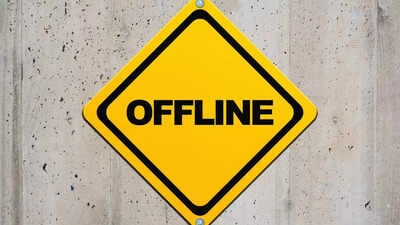No Wi-Fi, No Google Maps, No Instagram: The last offline villages in the world where 2.6 billion still wait for internet |

Tech has transformed lives across much of the globe, with billions swiping, streaming, and scrolling through life. But for an astonishing 2.6 billion people—nearly a third of the global population—the internet remains out of reach. These individuals live beyond the edge of connectivity, often in remote villages carved into mountains, scattered across deserts, or hidden deep within tropical jungles. In these regions, Wi-Fi is non-existent, smartphones are rare, and the very concept of digital inclusion feels foreign. Despite the internet becoming central to everything from education and banking to health care and disaster response, a vast segment of humanity remains in digital darkness.Disconnected not by choice, but by circumstance, these communities span from the high Himalayas of India to the savannas of central Africa and the Amazon basin. Their daily lives are shaped not by tweets or TikToks, but by oral tradition, land-based navigation, and deeply rooted communal knowledge. This exclusion is not just about missing out on convenience—it has serious consequences for education, health, safety, and economic opportunity. In 2025, the persistence of offline villages is a humanitarian and developmental challenge as much as a technological one.
Why 2.6 billion people in the world still live without internet in 2025
According to a 2023 report by the International Telecommunication Union (ITU), roughly 2.6 billion people remain offline. The digital divide has narrowed over the past decade, but significant disparities remain. Most of the disconnected live in developing countries, often in regions that are:
- Geographically isolated (e.g., mountain villages, desert settlements)
- Politically unstable (e.g., conflict zones)
- Economically marginalized (e.g., post-colonial rural areas)
- Lacking in infrastructure (e.g., no roads or reliable electricity)
The offline population is disproportionately rural, poor, and underrepresented. Many communities lack not just internet access, but even basic telecommunications infrastructure like 2G mobile coverage or landlines.
Life without connection: Stories from the edges
Kibber, India: Climbing for homeworkAt over 14,000 feet, the Himalayan village of Kibber in India’s Spiti Valley might have postcard views, but it’s digitally isolated. Students there hike to ridges where a weak mobile signal allows them to download homework or send completed assignments. With no broadband, learning depends on weather, topography, and sheer persistence.Northern Mali: Oral traditions over TwitterIn northern Mali, decades of conflict have shattered digital infrastructure. Armed groups routinely disable towers, making even basic mobile communication a rarity. In this void, oral traditions and storytelling remain dominant, linking generations through memory rather than media.Papua New Guinea: Maps in the dustIn villages in Papua New Guinea, GPS means nothing. There are no Google Maps, and few have ever touched a smartphone. Directions are traced in dust, passed from elder to child. The digital world is more myth than memory here.
No signal, no safety: The deadly cost of being offline
The idea of places untouched by technology often captures the imagination. No ads. No screen fatigue. No surveillance. But behind the romantic notion of a disconnected utopia lie harsh realities:
- No access to telemedicine during health crises
- No remote learning during pandemic lockdowns
- No early-warning systems during floods, cyclones, or earthquakes
- No digital banking or ID systems, limiting access to welfare schemes
The COVID-19 pandemic laid bare the consequences. In 2020 and 2021, entire offline regions received vaccine updates, lockdown guidelines, and emergency warnings late—if at all. The absence of digital connection didn’t protect them from the virus; it made them more vulnerable.
Disconnected by design: When opting out is a choice
Not all offline communities are victims of circumstance. In parts of rural Vermont or among Amish populations in Pennsylvania, disconnection is a conscious choice. Motivated by:
- Religious beliefs
- Environmental concerns
- Resistance to surveillance capitalism
- A desire for simpler living
These groups navigate the digital world on their own terms, often using limited tech for essential tasks while rejecting broader adoption. But they are the exception.For the majority of the 2.6 billion offline people, disconnection is structural, not spiritual.
Satellite dreams and grounded realities
Starlink and the promise from the skyElon Musk’s Starlink, a low-Earth orbit satellite constellation, has been hailed as a possible equalizer. In theory, it can beam broadband to any corner of the planet. In practice, however:
- High costs make it inaccessible to most rural users
- Power reliability remains a barrier (no electricity = no modem)
- Device literacy is low in remote areas
- Installation logistics are complex in conflict zones or mountainous regions
The fall of Project LoonAlphabet’s Project Loon, which used high-altitude balloons to deliver internet, was grounded in 2021. Despite promising trials in Kenya and Puerto Rico, the initiative struggled with:
- Sustainability issues
- Coverage limitations
- High operational costs
These experiments show that technical feasibility does not always translate into practical access on the ground.
How poor planning keeps communities in the dark
Even when governments pledge universal connectivity, bureaucratic inefficiencies, corruption, and poor planning often leave towers half-built or non-functional. In some African and South Asian nations, digital infrastructure projects are plagued by:
- Overpricing and tender manipulation
- Poor maintenance
- Lack of local technical expertise
- Inconsistent power supply
As a result, some communities are within visible range of a cell tower but remain offline.Also read | Tech layoffs 2025: Over 61,000 jobs cut as Microsoft, Google, Amazon, and CrowdStrike reshape workforce





